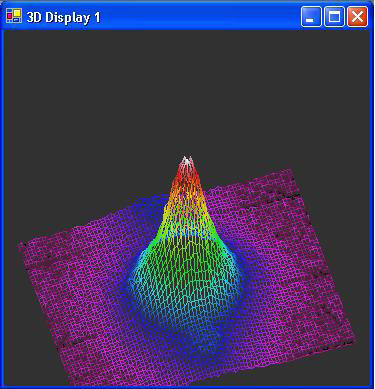
Customer inquiry:
I am interested in purchasing a pulsed Nd:YAG laser with excellent beam quality
for a series of NL optical experiments including HyperRayleigh Scattering and
pulsed Z-scan experiments. One option I am considering is a telescope cavity
with a removable aperture to be able to reach a TEM00 mode for the Z-scan
experiments, but having the flexibility to remove the aperture and gain more
energy/pulse (at the expense of more transverse spatial beam structure) for the
HyperRayleigh studies.
I am however intrigued by your ring laser design specifically the LQ529 and
would like to know more. Can you tell me what the M2 value of the 1064nm beam
is? Would it be possible in the future to upgrade to LQ929 if we get funding to
build up an amplified Ti:Sapphire system? What is the approximate price for a
LQ529 system with the option of a second harmonic module as an external module?
For the Z-scan experiments a single transverse
mode is required.
We would be interested in a having as much energy /pulse (40mJ?) and lowest M2
(2) as possible. A 10Hz PPR would be fine. The actual beam diameter and
divergence are by themselves not critical, we would like to have the lowest M2
value possible.
However for HyperRayleigh experiments a multi-mode beam profile would be Ok,
provided it is relatively smooth. Would it be possible for us to insert and
remove the aperture, letting us switch from a TEM00 low energy/pulse to a
multimode higher energy/pulse laser?
Del Mar Photonics proposal:
Pulsed Nd:YAG lasers with cavity aperture for singe
transversal mode
1. Pulsed Nd:YAG laser model LQ529C:
Beam distribution – TEM00 (singe transversal mode);
PRR – 10 Hz;
Output beam diameter – about 2.3 mm (cavity aperture diameter about 2.3 mm);
Output energy at 1064 nm – not less than 25 mJ (>/=25 mJ);
M2 – not less than 1.7 (>/=1.7);
Linewidth at 1064 nm - not more than 1 cm-1.
request a quote
2. Pulsed Nd:YAG laser model LQ629-100:
Beam distribution – TEM00 (singe transversal mode);
PRR – 10 Hz;
Output beam diameter – about 5 mm;
Output energy at 1064 nm – not less than 50 mJ (>/=50 mJ);
M2 – not less than 1.7 (>/=1.7);
Linewidth at 1064 nm - not more than 1 cm-1.
request a quote

Typical near field distribution for singe transversal mode (TEM00).
The Z-scan measurement technique is an xperimental procedure that gives information on the optical nonlinearities of materials. The technique [1,2] is performed by sending an axially symmetric Gaussian beam through a converging lens, then through a sample of material placed near the beam waist, and finally through an aperture placed in front of a detector in the far field. As the sample is moved to one side of the beam waist, the detected power increases to a peak; as the sample ismoved to the other side of the waist, the detected power decreases to a valley. The difference in power from the peak to the valley has been shown to be proportional to the nonlinear index of refraction n2. Consequently the Z-scan technique permits determination of n2 for different materials.
1. M. Sheik-Bahae, A. A. Said, and E. W. Van Stryland, Opt.
Lett. 14, 955 (1989).
2. M. Sheik-Bahae, A. A. Said, T.-H. Wei, D. J. Hagan, and E. W. Van Stryland,
IEEE J. Quantum Electron. 26, 760 (1990).
Basic information about Hyper-Rayleigh Scattering presented by
the featured Del Mar Photonics customer at Northwestern University
|
Hyper-Rayleigh scattering (aka Harmonic Light Scattering or HRS) relies on instantaneous fluctuations of an otherwise homogeneous solution to produce frequency doubled light. Varying the concentration of the solute allows for the assessment of the molecular hyperpolarizability (b) of the solute if b of the solvent is known, or vice versa. |
| Schematic representation of laser and collection apparatus used in hyper-Rayleigh scattering experiment. BS = beamsplitter, CL = convex lens, H = half wave plate, IF = interference filter, LP = low pass filter, M = mirror, P = femtosecond polarizer, PCL = planoconvex lens, PD = photodiode, PMT = photomultiplier tube. |
|